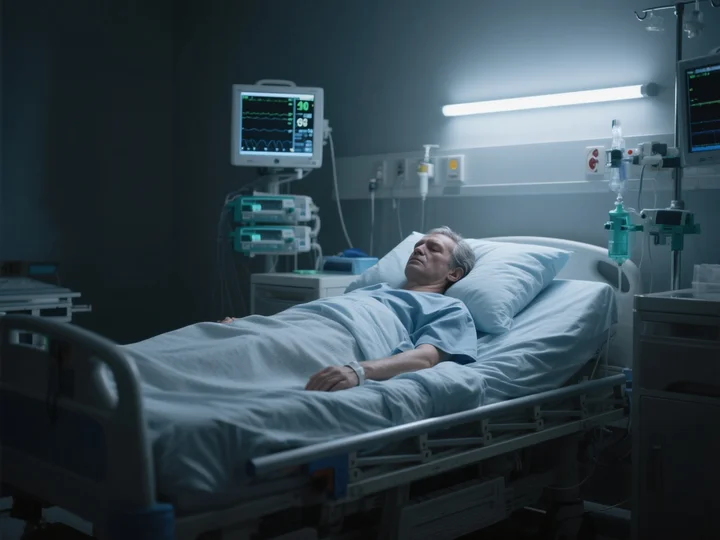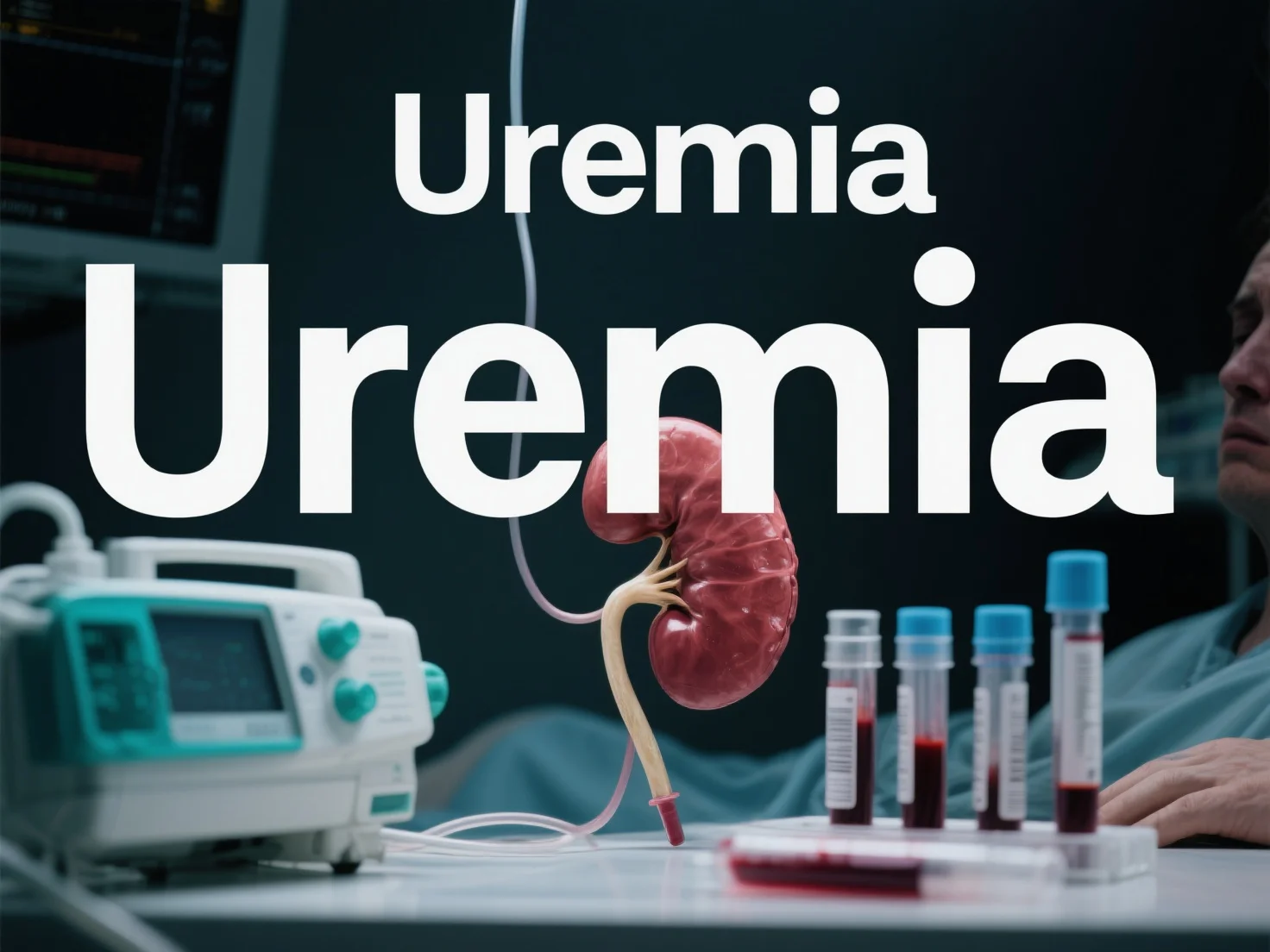Uremia occurs when acute or chronic kidney failure reaches its most severe stage, leading to the accumulation of metabolic waste and endogenous toxins in the body. This causes disruptions in water, electrolyte, and acid-base balance, as well as endocrine dysfunction, resulting in a range of autointoxication symptoms.
Clinical Manifestations
1. Nervous System
Uremic Encephalopathy
Early symptoms include fatigue, weakness, headaches, dizziness, apathy, and reduced comprehension and memory. In severe cases, patients may experience agitation, muscle tremors, increased muscle tone, seizures, and eventually somnolence or coma. Possible mechanisms include:
- Accumulation of toxic substances reducing Na+, K+-ATPase activity, increasing sodium in brain cells, and causing cerebral edema.
- Renal hypertension leading to cerebral vasospasm, hypoxia, and increased capillary permeability, resulting in neuronal degeneration and brain edema.
Peripheral Neuropathy
Symptoms include lower limb weakness, numbness, tingling, burning pain, motor weakness, and diminished tendon reflexes, progressing to motor impairment. This arises from increased guanidinosuccinic acid in uremic patients, which inhibits transketolase in nerves, causing myelin degeneration and peripheral nerve symptoms.
2. Digestive System
Digestive symptoms are among the earliest and most prominent in uremia. Early signs include anorexia, followed by nausea, vomiting, diarrhea, oral mucosal ulcers, and gastrointestinal bleeding. These may result from increased urea excretion in the digestive tract, where urease breaks it down into ammonia, irritating the gastric mucosa and causing inflammation or ulcers.
3. Cardiovascular System
Approximately 50% of patients with chronic renal failure or uremia die from congestive heart failure or arrhythmias. In advanced stages, uremic pericarditis, often fibrinous, may occur due to direct irritation of the pericardium by uremic toxins.
4. Respiratory System
Acidosis in uremia accelerates and deepens breathing. In severe cases, reduced excitability of the respiratory center may lead to Cheyne-Stokes or Kussmaul breathing. Exhaled breath may carry an ammonia odor due to urea breakdown by salivary enzymes. Urea irritation of the pleura can cause fibrinous pleuritis, and severe cases may develop pulmonary edema due to heart failure, hypoalbuminemia, or sodium and water retention.
5. Metabolic Disorders
- Impaired Glucose Tolerance: Patients often show reduced glucose tolerance, possibly due to insulin antagonists in the blood reducing peripheral tissue response to insulin.
- Protein Metabolism Disorders: Anorexia, dietary restrictions, and toxic substances reduce hepatic protein synthesis while increasing breakdown, leading to hypoalbuminemia.
- Lipid Metabolism Disorders: Hyperlipidemia, particularly elevated triglycerides, results from insulin antagonists increasing hepatic triglyceride synthesis or reduced lipoprotein lipase activity slowing triglyceride clearance.
6. Immune Function Decline
About 60% of uremic patients experience severe infections due to suppressed immune function, primarily affecting cellular immunity while humoral immunity remains normal or slightly reduced. Toxic substances in uremia impair lymphocyte differentiation and maturation, weakening neutrophil phagocytosis and bactericidal activity.
7. Endocrine Disorders
Beyond renal endocrine dysfunction, sex hormone imbalances lead to sexual dysfunction. Women may experience irregular menstruation or spontaneous abortion, while men may face impotence, reduced sperm production, or decreased sperm motility. Other endocrine functions are often disrupted.
8. Skin and Mucosal Changes
Uremic patients often have darker skin with diffuse melanin pigmentation and urea crystals on the skin, known as “urea frost.” Itching is common, possibly due to nitrogenous waste irritating the skin or elevated parathyroid hormone levels.

Pathogenesis
In renal failure, protein metabolites accumulate due to impaired renal excretion, causing toxic symptoms. These uremic toxins, combined with water, electrolyte, acid-base imbalances, and endocrine dysfunction, contribute to symptoms.
1. Parathyroid Hormone (PTH)
Elevated PTH levels are closely linked to many uremic symptoms:
- Causes renal osteodystrophy.
- Triggers skin itching.
- Stimulates gastric acid secretion, promoting ulcers.
- Prolonged high PTH levels damage peripheral and central nervous systems.
- Increases protein breakdown, leading to nitrogen accumulation.
- Contributes to hyperlipidemia and anemia.
2. Guanidine Compounds
Guanidine compounds, metabolites of arginine, accumulate in late-stage renal failure. Methylguanidine, a highly toxic small molecule, can cause vomiting, diarrhea, muscle spasms, and somnolence. Guanidinosuccinic acid, less toxic, inhibits transketolase in brain tissue, causing encephalopathy.
3. Urea
The role of urea in uremia is debated, but recent studies suggest its toxicity stems from cyanate, a metabolite. Cyanate reacts with proteins to form carbamylated derivatives, impairing synaptic membrane proteins and causing fatigue, headaches, and somnolence.
4. Amines
Amines, including aliphatic, aromatic, and polyamines, inhibit enzymes like Na+, K+-ATPase, causing nausea, vomiting, proteinuria, hemolysis, reduced erythropoietin production, and increased microvascular permeability, making them significant in uremia’s pathogenesis.
5. Middle-Molecular Substances
Substances with molecular weights of 500–5000 contribute to central and peripheral neuropathy and reduced cellular immunity.
In summary, uremia’s diverse symptoms cannot be attributed to a single toxin but result from the combined effects of various toxins and metabolic disorders.
Treatment Principles
- Identify and Treat Underlying Causes: Address primary conditions causing renal failure.
- Eliminate Factors Worsening Renal Failure: Ensure rest, enhance care, and prevent or control infections.
- Manage Complications: Control hypertension, treat anemia, prevent bleeding, manage azotemia, and correct water, electrolyte, and acid-base imbalances.
- Adopt a Balanced Diet: Tailor nutrition to patient needs.
- Dialysis and Kidney Transplantation: Use as necessary for advanced cases.
Share this content:

Leave a Reply